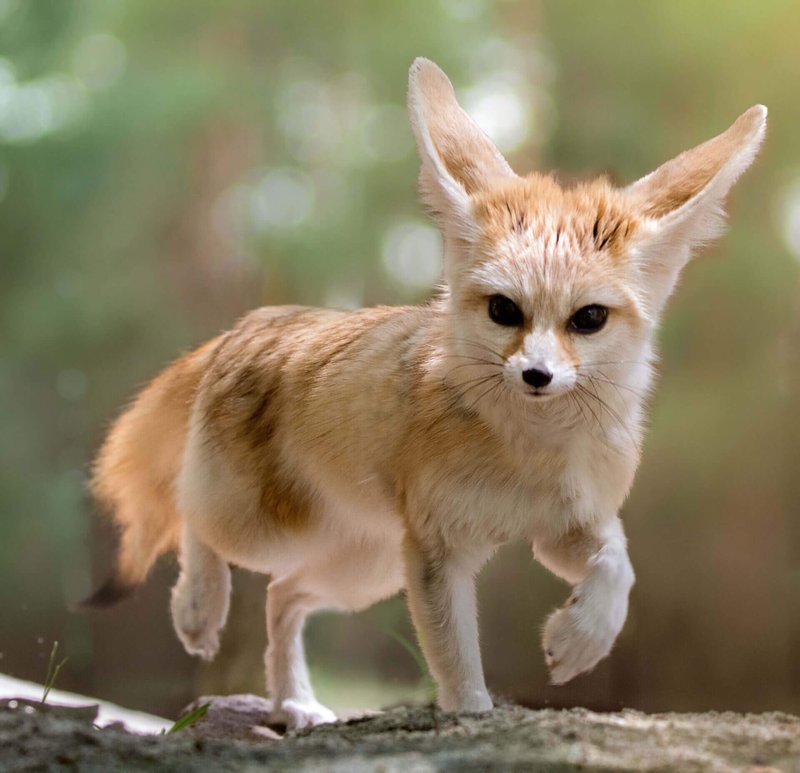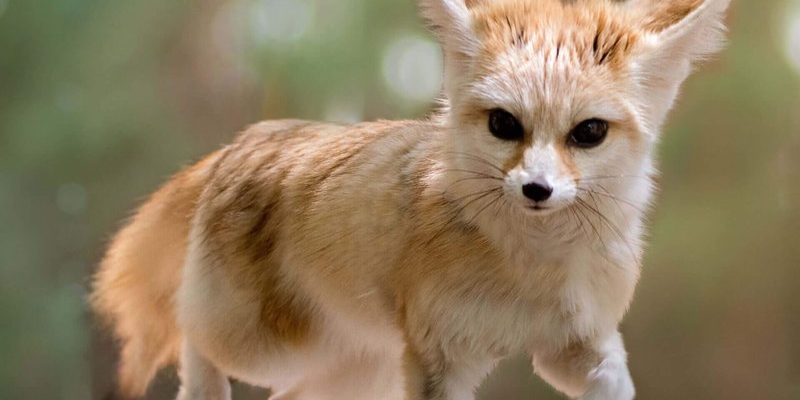
As we sip our coffee and discuss these fascinating little foxes, it’s essential to understand what’s happening to their populations around the globe. Although fennec foxes are not currently classified as endangered, they face numerous threats that could impact their existence. Let’s dive into the world of the fennec fox, exploring their habitat, the challenges they face, and what we can do to ensure their survival.
Understanding The Fennec Fox
Fennec foxes are a unique species, known for their small size and distinctive features. Weighing around 1.5 to 3.5 pounds and standing about 8 to 10 inches tall, these foxes are the smallest canids in the world. Their ears, which can be as long as 6 inches, aren’t just for show; they help dissipate heat and amplify sounds, helping the foxes locate prey in the vast desert.
You might be wondering what their day-to-day life looks like. Fennec foxes are nocturnal, meaning they’re most active at night when temperatures drop. They dig burrows underground to escape the heat, providing a cool refuge during the day. These burrows also protect them from predators, making them a crucial part of their survival strategy.
Fennec foxes primarily feed on insects, small rodents, and plants, which helps them thrive in their arid environment. Their keen senses and adorable antics make them a joy to observe, reminding us how special these creatures are.
The Conservation Status of the Fennec Fox
The International Union for Conservation of Nature (IUCN) categorizes the fennec fox as “Least Concern.” This means that, as of now, their populations are stable, and they aren’t facing immediate threats of extinction. However, conservationists are always keeping an eye on the situation to ensure this status remains unchanged.
So, what does “Least Concern” really mean? It suggests that while fennec foxes are not currently endangered, it doesn’t mean they’re out of the woods. Their population is relatively healthy, but changes in their environment could quickly alter that reality.
Here’s the thing: just because they aren’t endangered right now doesn’t mean we can ignore them. The threats they face, such as habitat destruction and hunting, can escalate quickly if not addressed.
Threats to the Fennec Fox Population
Despite their current status, fennec foxes encounter several significant threats. Here’s a breakdown:
- Habitat loss: As human activities expand into their desert environment, fennec fox populations are losing crucial living spaces. Urbanization and agriculture can push them into smaller, fragmented areas.
- Illegal hunting: Some cultures believe that fennec foxes have medicinal properties, leading to poaching. Additionally, their fur is sometimes sought after, making them targets for hunters.
- Climate change: Changes in climate can affect the fennec fox’s habitat, altering food availability and temperature conditions. This can impact their ability to thrive in the desert.
Addressing these threats is crucial for maintaining fennec fox populations. Understanding the impact of human activities on their habitat is just the first step in ensuring their survival.
Conservation Efforts to Protect Fennec Foxes
Various organizations and governments are working hard to protect fennec foxes and their habitats. Initiatives include:
- Protected areas: Establishing national parks and reserves helps safeguard the natural habitat of fennec foxes. These protected spaces provide a safe environment for them to thrive.
- Research and monitoring: Scientists study their behaviors and populations to understand better how to support their survival. This information can guide conservation strategies effectively.
- Community engagement: Educating local communities about the importance of fennec foxes and their role in the ecosystem can foster support for conservation efforts. This often leads to more sustainable practices that protect wildlife.
These efforts highlight the importance of working together to make a difference. Conservation is not a one-person job; it requires collaboration between scientists, local communities, and organizations.
How Can You Help Fennec Foxes?
You might be wondering how you can contribute to the conservation of fennec foxes, even if you’re not living near their natural habitat. Here are a few ways to make a positive impact:
- Support conservation organizations: Donating to or volunteering with groups that focus on wildlife protection can make a significant difference. Your contributions help fund research, education, and habitat restoration projects.
- Spread awareness: Talking about fennec foxes and the challenges they face can increase awareness. Social media is a powerful tool for sharing information and advocating for wildlife conservation.
- Adopt sustainable practices: By making eco-friendly choices in your daily life, you contribute to the health of the planet. Every small change can help protect the environments that these foxes rely on.
Your engagement can help drive change and inspire others to join the fight for fennec foxes. Remember, every bit counts.
The Bigger Picture: Biodiversity Conservation
When discussing fennec foxes, it’s essential to remember that they are part of a larger ecosystem. Protecting one species often requires safeguarding the entire habitat and its inhabitants. The loss of fennec foxes could impact other species in their environment, leading to a ripple effect that disrupts the entire ecosystem.
Biodiversity is crucial for maintaining healthy ecosystems, and each species, including the fennec fox, plays a role in that balance. It’s a reminder that we’re all connected—what affects one part of the environment can impact another.
While fennec foxes are currently classified as “Least Concern,” their future depends on ongoing conservation efforts and our collective actions. Raising awareness, supporting protective measures, and advocating for sustainable practices can create a brighter future for these charming little creatures.
So, the next time you come across a fennec fox image or hear about their playful antics, take a moment to consider how you can contribute to their conservation. After all, every step we take towards protecting wildlife reinforces the idea that we share this planet with many remarkable creatures, and it’s our responsibility to ensure their survival.

